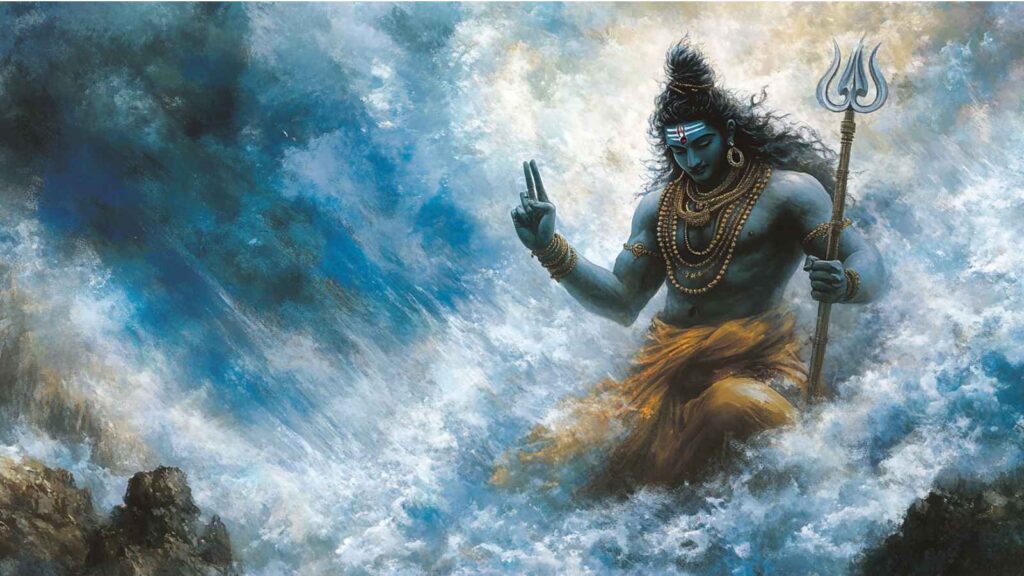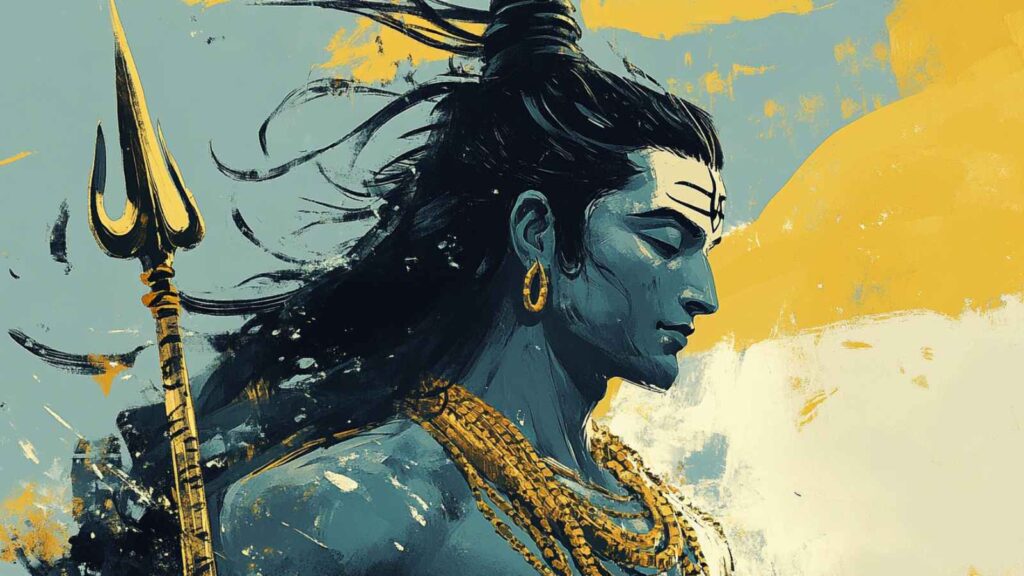Mahashivratri: A Night of Devotion, Transformation, and Divine Union
Mahashivratri, the “Great Night of Shiva,” is one of Hinduism’s most sacred festivals. Observed with deep reverence and fervor by millions of devotees worldwide, it marks the auspicious night when Lord Shiva—the Destroyer and Transformer in the Hindu trinity—is believed to have performed the Tandava, the cosmic dance of creation, preservation, and dissolution. This festival is not merely a celebration but a profound journey into the realms of spiritual awakening, self-realization, and inner transformation. In this comprehensive guide, we delve into the ancient scriptures, rituals, and temple traditions that make Mahashivratri a cornerstone of Hindu devotional practice.
Mahashivratri draws its inspiration from foundational texts such as the Vedas, Upanishads, and Puranas, which provide rich philosophical insights and ritual guidelines. These scriptures elucidate the mysticism of Lord Shiva, highlighting themes of cosmic balance, regeneration, and the ultimate quest for truth. During this sacred night, devotees engage in fasting, night-long vigils, meditation, and the recitation of sacred hymns, all aimed at purifying the soul and invoking the divine blessings of Lord Shiva.
Read More About Ritual & Practices
This guide not only explores the spiritual and ritualistic dimensions of Mahashivratri but also highlights iconic temples where the festival is celebrated with grandeur. We take a closer look at three revered Shiva temples—Kedarnath Temple, Kashi Vishwanath Temple, and Mahakaleshwar Temple—detailing their historical background, architectural marvels, and the unique experiences they offer to visitors. Additionally, we provide creative guidelines for generating captivating AI visuals that encapsulate the essence of Mahashivratri, ensuring that your content is both engaging and optimized for search engines.
Foundational Scriptures: The Spiritual Backbone of Mahashivratri

The Vedas and Upanishads
The ancient Vedas—the Rigveda, Samaveda, Yajurveda, and Atharvaveda—are the bedrock of Hindu spiritual thought. While these texts do not mention Mahashivratri explicitly, they set the stage for the development of devotional practices by emphasizing cosmic order (Rta), the cyclical nature of time, and the omnipresence of divine energy. Their hymns, chanted during rituals, invoke the universal principles that govern creation, preservation, and destruction—the very processes embodied by Lord Shiva.
The Upanishads delve deeper into the nature of reality and the interconnectedness of the individual soul (Atman) with the ultimate reality (Brahman). These texts encourage seekers to transcend the physical realm and attain spiritual liberation (moksha), a quest that resonates profoundly with the symbolism of Mahashivratri. By meditating on Shiva’s form and chanting his sacred mantras, devotees believe they can overcome inner darkness and realize their true spiritual nature.
The Puranas and Shiva Scriptures
The Puranas, especially the Shiva Purana and the Linga Purana, offer elaborate narratives about Lord Shiva’s exploits, his role in cosmic regeneration, and his compassionate nature. According to these texts, Mahashivratri is not just a festival but a cosmic event—a time when the divine energy of Shiva is especially potent, enabling the dissolution of ignorance and the bestowal of wisdom.
These scriptures recount the legend of Shiva’s Tandava—the vigorous dance that symbolizes the continuous cycle of creation and destruction. They also highlight Shiva’s role as the ultimate ascetic and the epitome of spiritual wisdom. For devotees, reciting the sacred stories from these texts during Mahashivratri serves as a reminder of the eternal struggle between ignorance and enlightenment.
“In the stillness of the night, when the world slumbers, the divine dance of Shiva awakens the soul, dispelling darkness and ushering in the light of wisdom.”
– Traditional Adage on Mahashivratri
Devotional Literature and the Bhagavad Gita
Though the Bhagavad Gita primarily focuses on the dialogue between Krishna and Arjuna, its teachings on selfless action, duty (dharma), and the path of devotion (bhakti) resonate deeply during Mahashivratri. Devotees draw inspiration from these universal principles, recognizing that the true essence of the festival lies in surrendering the ego and embracing divine love. Over centuries, devotional literature has celebrated Shiva as both a fierce destroyer of evil and a compassionate protector, reinforcing the message that surrender to the divine can lead to ultimate liberation.
These sacred texts collectively form the spiritual and philosophical framework of Mahashivratri, guiding devotees in their quest for inner purity, wisdom, and transformation.
Rituals and Traditions: The Night of Awakening

Mahashivratri is observed with a rich tapestry of rituals and traditions that blend austerity with ecstatic celebration. The festival is unique in its emphasis on night-long vigils, fasting, and meditative practices, which are believed to purify the mind and body.
Key Rituals of Mahashivratri
- Fasting and Purification:
Devotees observe strict fasts on Mahashivratri as a means to purify the body and focus the mind on spiritual pursuits. The fast is seen as an offering to Lord Shiva, symbolizing the renunciation of worldly desires in favor of divine connection. - Night-long Vigil (Jagaran):
Unlike many Hindu festivals that are celebrated during the day, Mahashivratri is observed through a night-long vigil. Devotees stay awake, engaging in meditation, prayer, and the recitation of Shiva’s sacred hymns. This vigil is considered a powerful form of devotion that helps dispel ignorance and awaken the inner self. - Abhishekam (Ritual Bathing):
One of the most significant rituals is the abhishekam—the ceremonial bathing of Shiva’s lingam with water, milk, honey, ghee, and other sacred substances. This ritual is symbolic of cleansing and renewal, representing the removal of impurities and the bestowal of divine blessings. - Chanting and Mantra Recitation:
Devotees chant powerful mantras like “Om Namah Shivaya” throughout the night. The rhythmic chanting creates a meditative atmosphere, believed to align the individual with the cosmic energy of Shiva and facilitate spiritual transformation. - Offerings and Devotional Songs:
Along with fasting and chanting, devotees offer fruits, flowers, and sweets to Shiva. The atmosphere is often filled with devotional songs (bhajans) that extol Shiva’s virtues and recount his divine acts, creating an immersive spiritual experience.
Symbolism of the Rituals
The rituals of Mahashivratri are rich in symbolism. The fasting and purification rituals symbolize the cleansing of the soul, the night-long vigil represents the triumph of light over darkness, and the abhishekam signifies the flow of divine grace. Together, these practices encourage devotees to introspect, discard negativity, and embrace the transformative power of divine energy.
Sacred Temples Celebrating Mahashivratri
Temples are the epicenters of Mahashivratri celebrations, where ancient traditions and modern devotion converge. In these hallowed spaces, the divine energy of Shiva is palpable, and the architectural grandeur enhances the spiritual experience. Below, we highlight three iconic Shiva temples renowned for their Mahashivratri festivities.
1. Kedarnath Temple, Uttarakhand
Location:
Kedarnath Temple is nestled in the Himalayan range of Uttarakhand, India.
Address: Kedarnath, Uttarakhand, India – Located at an altitude of 3,583 meters in the Garhwal Himalayas.
Historical Background:
Kedarnath Temple is one of the twelve Jyotirlingas—sacred shrines dedicated to Lord Shiva. According to Hindu mythology, Kedarnath is the place where Shiva imparted divine knowledge to his consort, Parvati, symbolizing the union of wisdom and power. The temple’s origins date back to ancient times, and it has been mentioned in revered texts like the Skanda Purana. Despite being situated in a remote mountainous region, Kedarnath has been a beacon of spiritual guidance for centuries, attracting pilgrims who endure challenging journeys to seek its blessings.
Architectural Highlights:
- Ancient Himalayan Architecture:
Constructed using local stone and wood, Kedarnath Temple is an exquisite example of ancient Himalayan architecture. Its simple yet robust design reflects the austere lifestyle and deep spirituality of its creators. - Sacred Ambience:
The temple’s architecture is imbued with symbolic elements such as the jyotirlinga, representing the infinite nature of Shiva. The use of natural materials and traditional craftsmanship creates an aura of timelessness and reverence. - Integration with Nature:
Perched amidst the majestic peaks and pristine valleys of the Himalayas, the temple’s setting is as much a part of its spiritual significance as the structure itself. The breathtaking natural landscape enhances the meditative experience of its visitors.
Visitor Experience:
Pilgrims visiting Kedarnath Temple during Mahashivratri embark on a challenging yet soul-stirring journey. The trek through rugged mountain trails, the crisp Himalayan air, and the serene environment collectively create an atmosphere conducive to deep introspection and spiritual renewal. Visitors often recount experiences of inner transformation as they partake in the temple rituals, witness the majestic panorama, and absorb the timeless spiritual energy of this sacred abode.
2. Kashi Vishwanath Temple, Varanasi, Uttar Pradesh
Location:
Kashi Vishwanath Temple is located in the ancient city of Varanasi, Uttar Pradesh, India.
Address: Kashi Vishwanath Temple, Varanasi, Uttar Pradesh – Situated in the heart of Varanasi, along the sacred Ganges River.
Historical Background:
Kashi Vishwanath Temple, one of the holiest temples dedicated to Lord Shiva, is steeped in myth and history. Varanasi, known as the spiritual capital of India, has been a center of learning and devotion for thousands of years. The temple is mentioned in several ancient scriptures, and its history is intertwined with the cultural and spiritual evolution of Hinduism. Mahashivratri at Kashi Vishwanath is celebrated with intense fervor, drawing devotees from across the country and beyond who come to witness the vibrant rituals and seek the divine blessings of Shiva.
Architectural Highlights:
- Ancient Structure with Modern Elements:
The temple’s architecture is a harmonious blend of ancient craftsmanship and later additions. With intricate carvings, detailed sculptures, and a striking spire, Kashi Vishwanath Temple is a visual testament to centuries of devotion. - Spiritual Symbolism:
The sanctum sanctorum houses a lingam of Lord Shiva, which is the focal point of worship. The temple’s design follows traditional Vastu Shastra, ensuring that every architectural element resonates with cosmic energy. - Vibrant Festive Decor:
During Mahashivratri, the temple is adorned with elaborate decorations, radiant lighting, and floral arrangements. The atmosphere is electric, and the blend of ancient architecture with modern festivity creates a surreal spiritual experience.
Visitor Experience:
A visit to Kashi Vishwanath Temple during Mahashivratri is an immersive cultural and spiritual journey. Devotees experience the rhythmic chants, the mesmerizing flow of the Ganges, and the fervor of collective prayer. The temple serves as a sanctuary where individuals from all walks of life unite in a shared quest for spiritual enlightenment. Visitors often leave with a renewed sense of purpose, having experienced the transformative energy that flows through the ancient lanes of Varanasi.
3. Mahakaleshwar Temple, Ujjain, Madhya Pradesh
Location:
Mahakaleshwar Temple is located in Ujjain, Madhya Pradesh, India.
Address: Mahakaleshwar Temple, Ujjain, Madhya Pradesh – Situated in the ancient city of Ujjain, one of the four sites of the Kumbh Mela.
Historical Background:
Mahakaleshwar Temple is one of the twelve Jyotirlingas and a major center of Shaivism in India. The temple’s history spans several millennia, and it is revered in numerous scriptures and devotional texts. According to legend, Mahakaleshwar is the lord of time, symbolizing the eternal cycle of creation and destruction. The temple has been a vital pilgrimage site since ancient times, drawing devotees who seek to understand the mysteries of time and mortality through the worship of Lord Shiva.
Architectural Highlights:
- Majestic Stone Architecture:
The temple boasts robust stone architecture characterized by intricate carvings, massive pillars, and a beautifully sculpted spire. The blend of artistic elements and engineering prowess is evident in every facet of the structure. - Sacred Ambience:
The sanctum sanctorum houses the revered lingam of Mahakaleshwar, which is bathed in ritualistic offerings during Mahashivratri. The temple’s ambiance is both awe-inspiring and deeply meditative. - Cultural and Spiritual Hub:
The temple complex is not only a site for religious worship but also a center for cultural gatherings, educational discourse, and community celebrations, particularly during the festival of Mahashivratri.
Visitor Experience:
Visitors to Mahakaleshwar Temple during Mahashivratri encounter a powerful fusion of spirituality and history. The temple’s energetic rituals, the echo of ancient chants, and the palpable aura of divine energy create a transformative experience for every pilgrim. Many visitors describe the experience as both humbling and uplifting, as they witness the profound devotion that has defined this sacred site for centuries.

